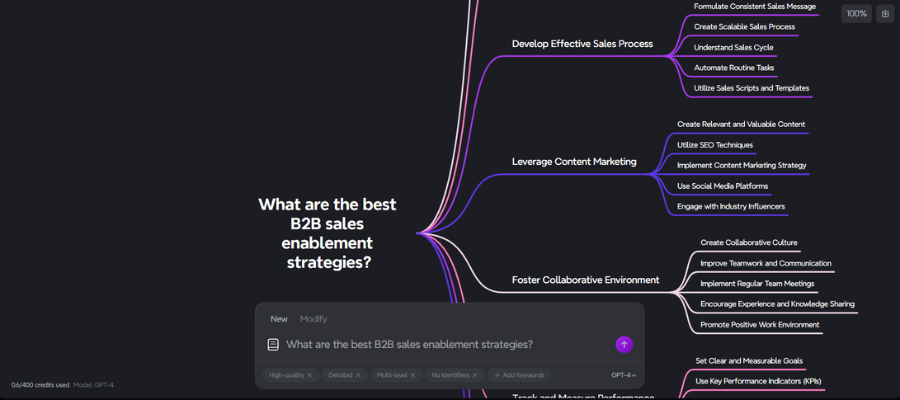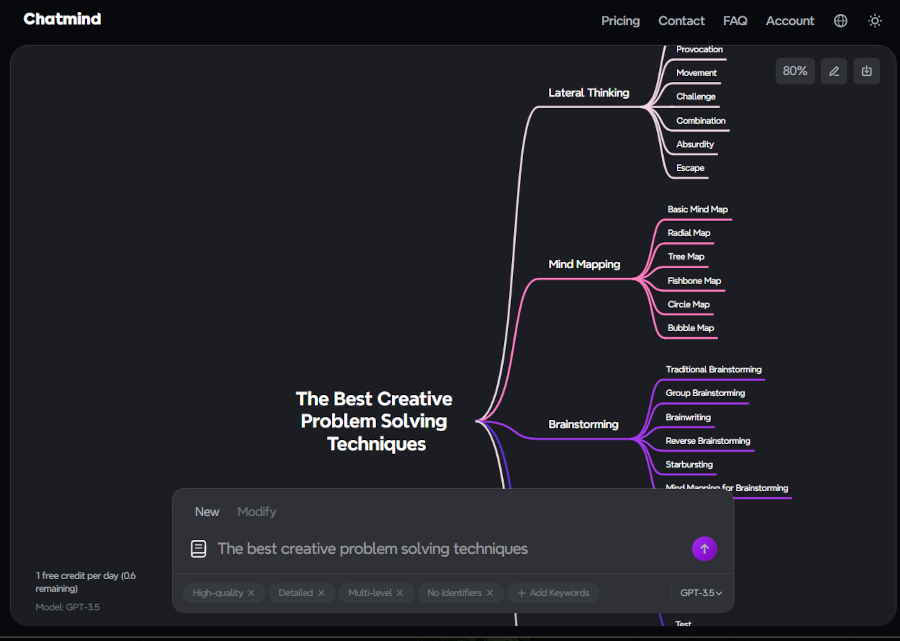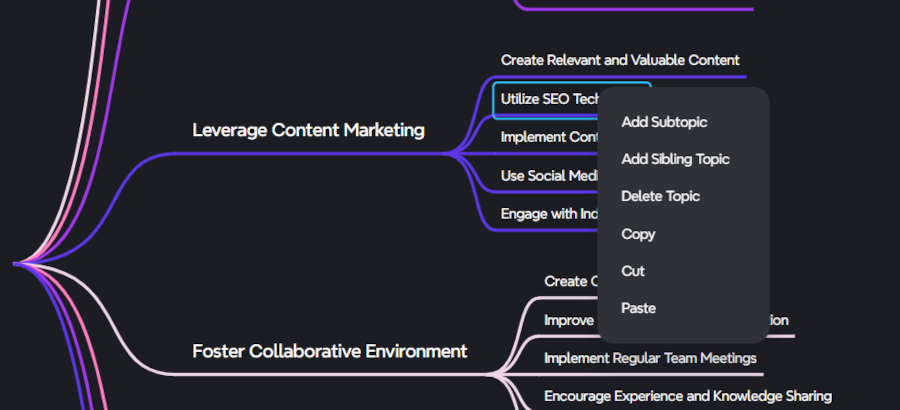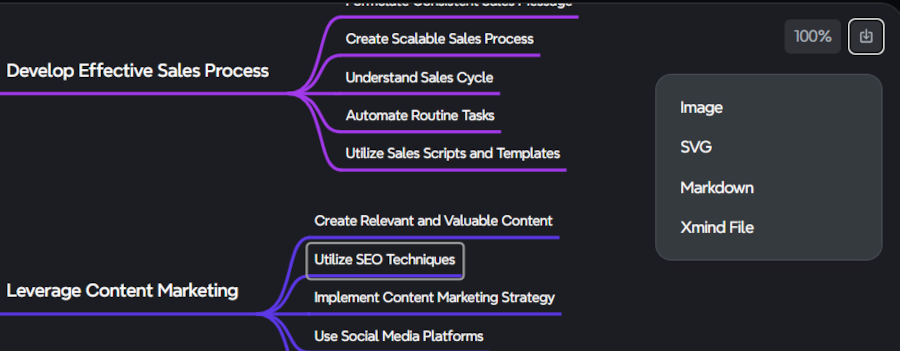
What if your existing mind mapping tool had a global base of customers in the millions and you wanted to more aggressively explore the potential and possibilities of AI-powered mind mapping? You would launch a new tool where you could do so without confusing or upsetting your existing customers.
That’s what Xmind is doing with its new Chatmind tool.
I recently reviewed Xmind Copilot, which aims to maintain the essential Xmind experience but give its users a taste of what’s possible with AI via ChatGPT 3.5. In contrast, Chatmind is an AI-native tool that revolves entirely around generative AI functions, such as crafting detailed text, images, and various multimedia content.
Curiously, you can create an AI-generated mind map using a text prompt for free. But if you want to edit or modify it, you need to become a subscriber, which costs a modest US$3.99 per month. This opens up the ability to edit your map, modify it via additional queries and export it to an image, markdown or SVG format. A subscription also gives you access to ChatGPT 4 (a more powerful large language model for more sophisticated AI output) and 300 credits per month to use it.
My Chatmind experiment
To explore what Chatmind can do, I entered the text prompt, “the best creative problem-solving techniques” in the dialog box that dominates the bottom center of the workspace. Below the text entry field are a series of checkboxes with names like “detailed,” “high quality,” “multi-level” and the mysterious “no identifiers,” which are enabled by default. Apparently, you can tweak the AI’s output by unchecking them. A final option lets you add keywords, which become part of the list of options at the bottom of this dialog box.

How do these options improve the accuracy of Chatmind’s AI output? It’s hard to say. I wish there was a bit more explanation of what these options are and how to use them. A help file or tutorial would be really nice. The developer is working on one now, I’m told.
After I submitted my text query, Chatmind quickly produced a mind map of decent-quality output that included methods like brainstorming, design thinking and mind mapping. Once a mind map was displayed in the workspace, I found that the dialog box got in the way of viewing the content of my mind map. Other than a zoom control, there didn’t seem to be an easy way to pan the mind map view – until I discovered I could do so by grabbing the central topic with my mouse and dragging it around the screen.

In order to get the full experience, I upgraded to paid account. Here’s what it unlocked:
Map editing: I could now edit map nodes and add new ones to the AI-generated mind map. Using the AI engine to add subtopics based on the currently-selected topic isn’t supported yet, but Xmind promises that it’s coming soon. How do you add your own ideas to an AI-generated mind map? Isind a right-click command. Chatmind doesn’t support the de fact standrd of using the Insert key to sdd a new child topic.

Map export formats: In the free version of Chatmind, it’s only possible to export your mind maps to the Xmind mind map format. The paid version unlocks several additional formats, as noted above.

Upgrade to ChatGPT 4: The free version of Chatmind only supports ChatGPT 3.5. The paid version enables ChatGPT 4.0, which is much more powerful.
The whole experience feels bare bones right now. There’s no option to add topic notes, icons or other topic embellishments. An undo function would be welcome, especially since not every query will produce the expected results. But Chatmind is a brand-new tool, and I’m told there are more features and functionality on the way. So we need to be patient and wait to see what’s next.
Conclusion
If you want to see what all the excitement is about, you may want to open a free Chatmind account and even sign up for the paid version. US$3.99 a month represents a very inexpensive experiment, in my opinion, one that I’m glad to make.
I’m confident, given Xmind’s track record for creating intuitive, easy-to-use mind mapping software, that Chatmind will become a powerful and compelling tool in the months and years ahead. As AI becomes more powerful and capable, mind has created a platform that will enable it to innovate quickly in Chatmind, while at the same time providing a more traditional mind mapping experience with a few AI enhancements to its huge base of existing users.
Right now, it feels and behaves like an early beta application – a little rough around the edges but with lots of room for growth. I look forward to watching how Chatmind evolves!

Leave a Reply